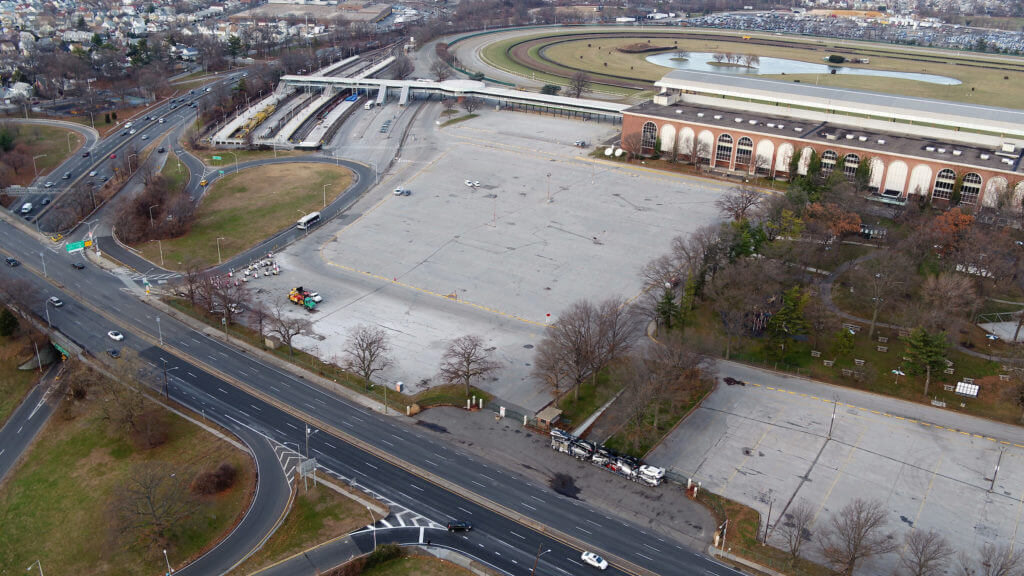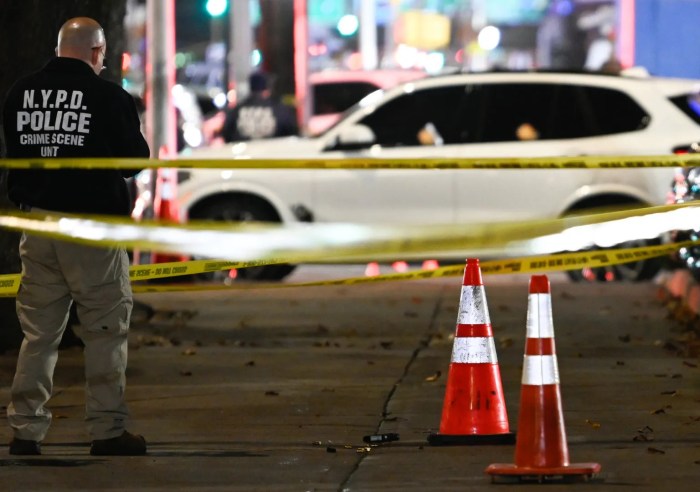City Comptroller Scott Stringer and City Councilman Barry Grodenchik are blowing the whistle over the state’s plan to redevelop part of Belmont Park and its potential impact on traffic in the neighboring area of Queens Village and Cambria Heights.
The $1.18 billion plan includes a 19,000-seat hockey arena for the New York Islanders, a 250-room hotel and a 435,000 square foot retail complex at Belmont Park, adjacent to the racetrack’s grandstand. The Empire State Development Corporation board of directors voted unanimously on Dec. 6 to adopt a 700-page study on the development plan last week that found even extra Long Island Rail Road trains to Belmont Park will do little to increase causing congestion in the area, particularly along Jamaica and Hempstead Avenues.
“A project of this magnitude will have far ranging impacts on these neighborhoods, with the potential to significantly increase congestion,” Stringer and Grodenchik wrote in a letter to city Department of Transportation Commissioner Polly Trottenberg, urging her agency to undertake a proactive study of potential impacts and consider appropriate mitigation expeditiously.
“The proposed development site already houses Belmont Park, the largest Thoroughbred racing facility in the country,” they wrote. “While average daily attendance is approximately 3,000 visitors during most of the year, attendance can reach between 60,000 and 100,000 visitors in peak periods. Additionally, the proposal calls for a 19,000-seat arena which will host between 44 and 60 New York Islanders home games each year and 145 non-NHL events.”
Empire State Development Corporation says it is working on a transportation management plan, but Stringer and Grodenchik had a warning for Trottenberg and the de Blasio administration.
“While New York State is controlling this process, it is incumbent as a city that we get prepared for the worst-case development scenario,” they wrote. “As such, we ask that DOT review the DEIS’s assumptions regarding peak trip times, modal share between mass transit and vehicular usage, and analyzed intersections to provide an independent review of ESDC’s methodologies.”
Stringer and Grodenchik called on the DOT to consider innovative traffic and parking mitigation including a Residential Parking program, whereby curbside parking is restricted to local residents during appointed hours of the day.
“DOT’s review of the Nassau/Queens Interface Transportation Study includes Jamaica and Hempstead Avenues, the two corridors identified in the original Environmental Impact Assessment,” a DOT spokesperson said. “While the original study did not specifically address the issues raised in the comptroller’s letter, we are adjusting the scope to incorporate that feedback for review.”


































